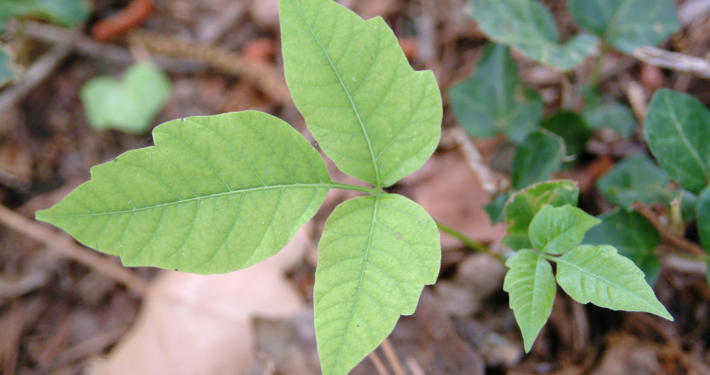How to Identify and Avoid Poison Ivy, Poison Oak, and Poison Sumac
Are you planning a hike or spending time in the great outdoors? Beware of poison ivy, poison oak, and poison sumac. These plants can cause a painful and itchy rash that can last for weeks. Learn to identify and avoid these plants to ensure a comfortable and enjoyable outdoor experience. Read on for tips on how to recognize these plants and take precautions to avoid the unpleasant effects of urushiol oil.
By: Richard Rich
Poison ivy, poison oak, and poison sumac are plants that can cause a painful and itchy rash. They contain an oily substance called urushiol that causes the rash when it comes into contact with skin. Learning to identify and avoid these plants is essential to prevent the rash from occurring. In this article, we’ll discuss how to identify and avoid poison ivy, poison oak, and poison sumac.
Identification
Poison ivy, poison oak, and poison sumac are all native to North America and can be found in most parts of the United States. Here’s how to identify each plant:
- Poison Ivy: Poison ivy is a vine that can climb up trees or grow as a shrub. It has three leaflets with pointed tips, and the leaves are glossy and green in the summer and turn red, yellow, or orange in the fall.
- Poison Oak: Poison oak is a shrub that grows up to 6 feet tall. It has three leaflets that are shaped like oak leaves, and the leaves are green in the summer and turn red or brown in the fall.
- Poison Sumac: Poison sumac is a tall shrub or small tree that can grow up to 25 feet tall. It has leaves that are arranged in pairs, with one leaf at the end. The leaves are oval-shaped, pointed at the tip, and have a smooth edge. The leaves are green in the summer and turn red or yellow in the fall.
Avoidance
The best way to avoid getting a rash from poison ivy, poison oak, or poison sumac is to avoid coming into contact with the plants. Here are some tips on how to do that:
- Wear protective clothing: If you are going to be in an area where these plants grow, wear long pants, long sleeves, and gloves. This will help prevent the oil from getting on your skin.
- Stay on the trail: Avoid walking off-trail in areas where these plants grow. The plants are more likely to be found in wooded areas or near bodies of water.
- Learn to identify the plants: Knowing what these plants look like will help you avoid them. Take the time to learn how to identify each plant, so you can avoid them when you see them.
- Be aware of the season: Poison ivy, poison oak, and poison sumac are most active during the summer and early fall months, when the plants are leafed out and producing urushiol oil. Be extra cautious during this time, especially in areas where these plants are known to grow.
- Check your surroundings: Before sitting or touching anything in an area where these plants may be present, inspect your surroundings carefully. Be mindful of where you place your hands and feet, and avoid sitting on the ground or logs if possible.
- Clean up properly: If you think you have come into contact with poison ivy, poison oak, or poison sumac, wash your skin and clothing with soap and water as soon as possible. The oil can remain on clothing, so be sure to wash everything that may have come into contact with the plants.
- Use caution around pets: Pets can also get a rash from these plants. If you have a dog that likes to run through wooded areas, be sure to check them for any signs of a rash.
- Keep children away: Children may be more likely to come into contact with these plants, as they may not be as aware of the danger. Teach children to recognize these plants and avoid them, and supervise them closely when in areas where these plants are present.
- Don’t burn the plants: Burning poison ivy, poison oak, or poison sumac can release the urushiol oil into the air, which can be extremely dangerous if inhaled. Never burn these plants or any materials that may have come into contact with them.
- Consider using a barrier cream: If you know you will be in an area where poison ivy, poison oak, or poison sumac are present, you may want to consider using a barrier cream such as I.C. Ivy Block. These creams create a barrier between your skin and the oil from the plants, helping to prevent the rash.
- Be aware of indirect contact: You can also get a rash from indirect contact with the plants. For example, if you touch an object that has come into contact with the plants, such as gardening tools or clothing, you can get a rash. Be sure to wash these objects thoroughly if you suspect they have come into contact with the plants. Use washes that are already designated for getting rid of Poison Ivy like I.C. Ivy Cleanse.
- Seek medical attention if necessary: If you do get a rash from these plants, it can be uncomfortable and last for several days to several weeks. In severe cases, the rash may require medical attention. If you experience a rash that is widespread, oozing, or doesn’t go away after a few weeks, seek medical attention.
- Know how to treat the rash: If you do get a rash, there are ways to treat it at home. Over-the-counter creams and ointments can help relieve itching like I.C. Ivy Relief, and cool compresses can help reduce swelling. However, it’s important to avoid scratching the rash, as this can lead to infection.
Conclusion
Poison ivy, poison oak, and poison sumac can cause a painful and itchy rash. Learning to identify these plants and taking steps to avoid them is essential to prevent the rash from occurring. Wear protective clothing, stay on the trail, learn to identify the plants, clean up properly, and use caution around pets to avoid contact with these plants. By following these tips, you can enjoy the outdoors without the discomfort of a rash.







